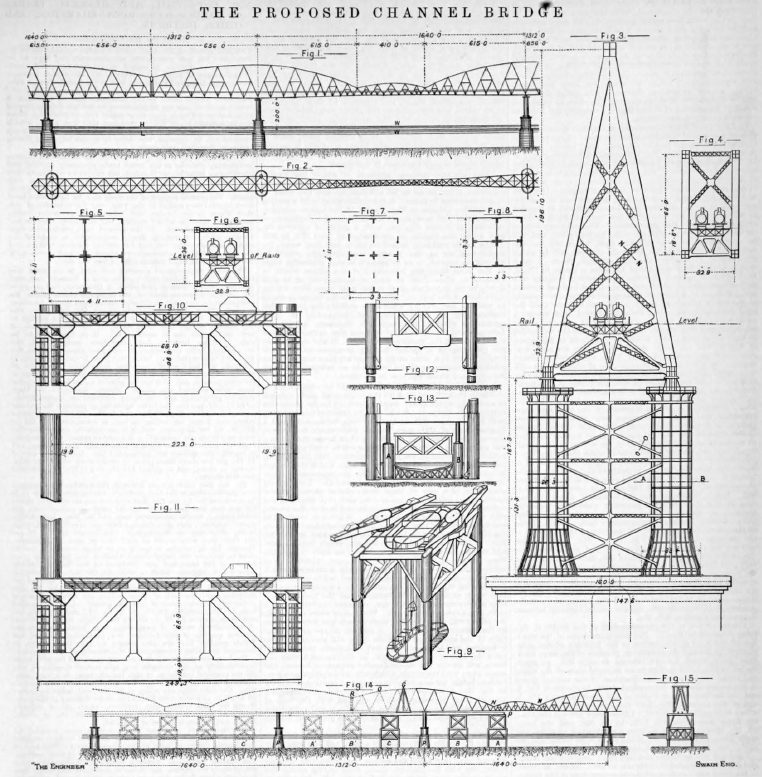Wonders of modern engineering skill, such as China's 20-mile Donghai bridge and Portugal's 10-mile Vasco de Gama bridge, would be dwarfed by a long-abandoned project considered by the Engineer back in 1893 — a bridge across the English Channel.

While today the prospect of a bridge that crosses the sea and dissects one of the world's busiest shipping lanes is almost inconceivable, back in 1893 many considered the idea a far more realistic proposition than a tunnel. Indeed, just a couple of years earlier, one of the many early attempts to dig a tunnel linking the UK and France had been abandoned in the face of fears that enemies could use it to mount an attack.
READ OUR ARCHIVE COVERAGE OF THE CROSS-CHANNEL BRIDGE
In a detailed article on the subject, the Engineer considered the work of the Channel Bridge and Railway company, which had been established to draw up a 'complete set of plans and calculations relating to the construction of a bridge' stretching from Cape Blanc-Nez, near Calais, to the opposite shore at Folkestone in Kent.
The piece describes a 21-mile long bridge, consisting of 73 piers, with spans arranged alternately in distances of 1,312ft (nearly 400m) and 1,640ft. All but one would be in the sea, with the deepest founded at 167ft and the masonry carried 46ft above the highest tides. It estimates the cost at around £38.4m (£2.3bn at today's prices).
'The realisation of the project would,' purred the magazine, 'constitute one of the most colossal engineering works of the age.'
However, the article stresses that the technical challenges involved are far from insurmountable — and argues that the work carried out on the Forth and Brooklyn bridges is evidence that the channel bridge is a feasible proposition. 'Those who.… assert that a bridge of the proposed dimensions would never withstand the pressure of the wind are…referred to the Forth Bridge, as well as to numerous suspension bridges of 60 years of age and upward which for that period have been exposed to the terrific assaults of the mistral, which are equally violent as the storms in mid channel.' The article argues that a more significant problem is the impact that such a bridge would have on shipping. To guard against danger from both the piers and the platform the Engineer therefore proposes 'a most comprehensive and elaborate system of illumination signals and foghorns'.
CLICK HERE FOR MORE STORIES FROM THE ENGINEER'S CLASSIC ARCHIVE




Poll: Should the UK’s railways be renationalised?
I think that a network inclusive of the vehicles on it would make sense. However it remains to be seen if there is any plan for it to be for the...